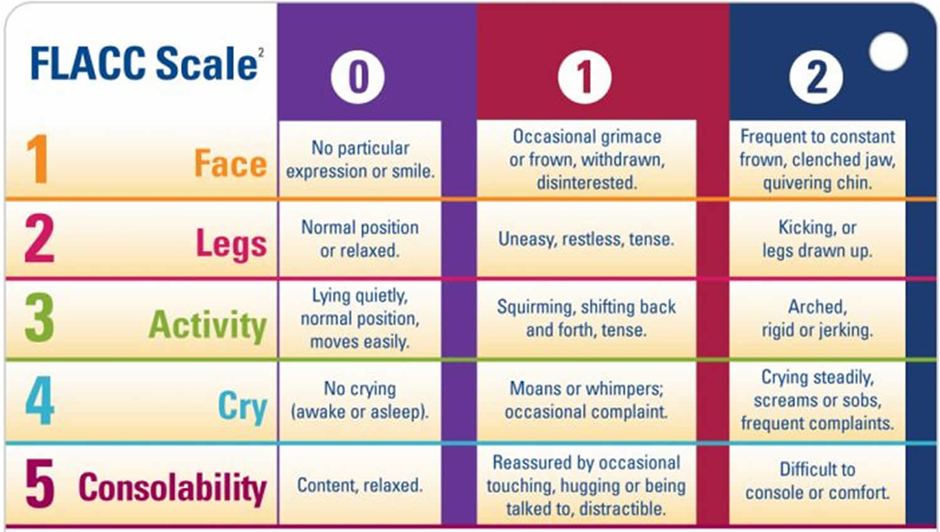A nurse is caring for a who speaks a different language than the nurse and is 6 hr postoperative. Which of the following actions should the worse take to determine the client's level of pain?
Use the FACES pain scale to gauge the client's level of pain.
Use a communication board to interact with the client.
Use the Face, Legs, Activity, Cry, Consolability (FLACC) scale to measure the client's pain level.
Ask an assistive personnel who speaks the same language as the client to interpret.
The Correct Answer is C
Choice A Reason:
Using the FACES pain scale to gauge the client's level of pain is appropriate. This scale relies on the client's ability to understand and communicate using a specific language, which might not be possible if there is a language barrier.
Choice B Reason:
Using a communication board to interact with the client is inappropriate. While communication boards can be helpful, they might not effectively gauge the client's level of pain, especially if the client's primary language isn't available on the board.
Choice C Reason:
Using the Face, Legs, Activity, Cry, Consolability (FLACC) scale to measure the client's pain level is appropriate. The FLACC scale is a pain assessment tool that evaluates pain in nonverbal patients or those who can't communicate effectively. It assesses facial expressions, leg movement, activity level, crying, and consolability to determine the level of pain the patient is experiencing.
Choice D Reason:
Asking an assistive personnel who speaks the same language as the client to interpret is inappropriate. Relying on an interpreter, even if they speak the same language as the client, might not be the best approach for pain assessment, as nuances related to pain expression and interpretation might be better captured through a standardized pain assessment tool like the FLACC scale.

Nursing Test Bank
Naxlex Comprehensive Predictor Exams
Related Questions
Correct Answer is B
Explanation
A. Check a client's peripheral IV site for redness or swelling.
This task involves assessing the client's IV site for signs of complications. While it requires observation and reporting, it may involve some interpretation and judgment. This task is better suited for a licensed nurse.
B. Measure the intake and output of a client who has received furosemide.
Measuring intake and output is a routine task that involves quantifying the fluids a client consumes and eliminates. This is a task that can be appropriately delegated to an assistive personnel (AP) under the supervision and direction of the nurse.
C. Reinforce teaching with a client about crutch-gait walking.
Teaching requires a level of education, explanation, and clarification that goes beyond routine tasks. This is typically a nursing responsibility and should not be delegated to an AP.
D. Assess the pain level of a client who has received acetaminophen.
Pain assessment involves subjective information, and determining the appropriate response may require clinical judgment. This task is better suited for a licensed nurse.
Correct Answer is A
Explanation
Choice A Reason:
Consuming probiotic sources is recommendable. Probiotics are beneficial bacteria that can promote gut health. Including probiotic sources in the diet, such as yogurt with live cultures or other fermented foods, can help maintain a healthy balance of gut bacteria and alleviate constipation.
Choice B Reason:
Using a laxative every day is not recommendable. Regular use of laxatives is generally not recommended for chronic constipation, as it can lead to dependence and may not address the underlying causes.
Choice C Reason:
Baking with white flour is not recommendable. Consuming refined white flour may not contribute significantly to relieving constipation. Whole grains, high-fiber foods, and adequate fluid intake are more beneficial.
Choice D Reason:
Taking a calcium supplement is not recommendable. While calcium is important for overall health, taking a calcium supplement is not typically recommended as the primary intervention for chronic constipation. Dietary and lifestyle measures, such as increasing fiber intake and staying hydrated, are more commonly recommended.
Whether you are a student looking to ace your exams or a practicing nurse seeking to enhance your expertise , our nursing education contents will empower you with the confidence and competence to make a difference in the lives of patients and become a respected leader in the healthcare field.
Visit Naxlex, invest in your future and unlock endless possibilities with our unparalleled nursing education contents today
Report Wrong Answer on the Current Question
Do you disagree with the answer? If yes, what is your expected answer? Explain.
Kindly be descriptive with the issue you are facing.
